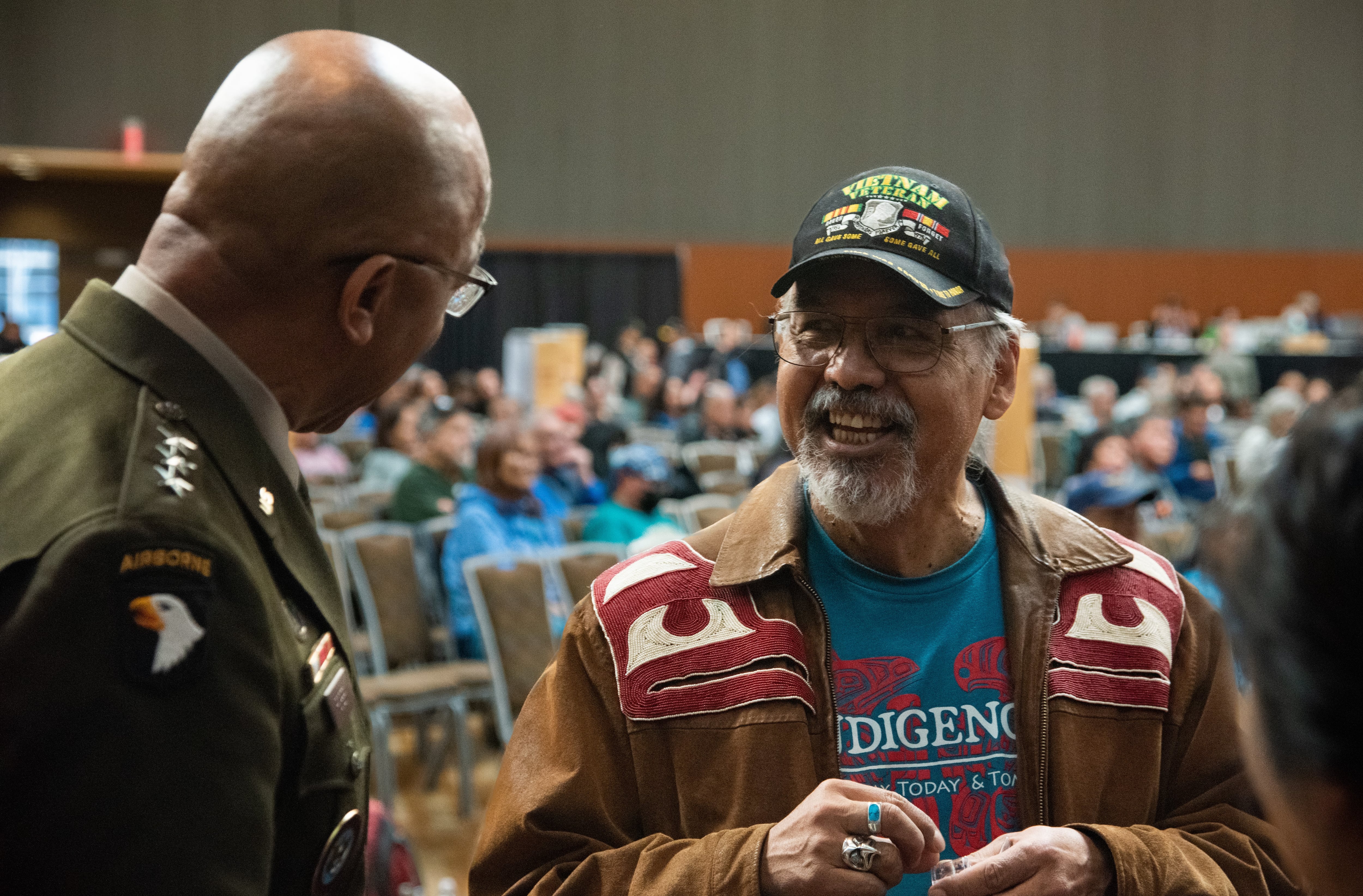The Department of Veterans Affairs launched a new life insurance program in 2023, called VALife, to expand life insurance options for disabled veterans. Those eligible are veterans age 80 and younger who have a VA service-connected disability rating — even if the rating is 0%.
There’s no time limit to apply for this program after getting the disability rating.
Veterans can get up to $40,000 in whole life insurance coverage, in $10,000 increments, and cash value that starts to add up two years after VA approves their application.
The amount of the monthly premium depends on the veteran’s age when they apply for the insurance and how much coverage. The premium won’t increase as long as they keep the VALife policy. For example, a veteran who is 18 when applying for the policy will pay $43.60 for the maximum $40,000 worth of coverage. A veteran who is 41 when applying will pay $91.20 a month for that maximum coverage.
It’s the first time VA has offered a new life insurance program in more than 50 years.
SGLI increase
Service members automatically received an extra $100,000 of life insurance coverage starting in March 2023, increasing the maximum Servicemembers’ Group Life Insurance coverage amount to $500,000. All service members automatically got the extra coverage, including those who had previously declined or reduced their Servicemembers’ Group Life Insurance, known as SGLI. The boost applies to all those eligible for SGLI, including active duty, Guard and Reserve members. SGLI is group term life insurance.
Troops pay a premium of $31 per month for $500,000 worth of coverage, which is deducted from their pay. That extra $100,000 of coverage costs them an extra $6 per month. The rate hasn’t changed; the cost is still 6 cents per $1,000 of insurance. The monthly premium includes $1 for Traumatic Injury Protection coverage (TSGLI).
SGLI coverage is offered in increments of $50,000. The monthly premium is the same regardless of the service member’s age or other factors.
If active duty service members want to decline or reduce their coverage, they can use the SGLI Online Enrollment System. Reservists with part-time SGLI coverage who want to reduce or decline their coverage should use Form SGLV 8286 and provide it to their personnel office.
It’s the first time the maximum SGLI coverage amount has increased since 2005.
The maximum coverage for Veterans’ Group Life Insurance, or VGLI, also increased to $500,000, also up by $100,000. That is not automatic. Eligible veterans must request it. Service members leaving the military on or after March 1, 2023 who had the maximum SGLI coverage can purchase VGLI coverage up to $500,000. There are certain time limits for purchasing VGLI policies after leaving the service, so troops need to do some cost comparisons before leaving the military. SGLI coverage doesn’t automatically carry over, and VGLI is more expensive than SGLI.
Veterans under age 60 who currently have $400,000 maximum VGLI coverage will be able to purchase additional coverage, in increments of $25,000, at specified anniversary dates.
VA offers other life insurance programs, such as the Family SGLI. A civilian spouse of a service member signed up for full-time SGLI is eligible for up to $100,000 worth of life insurance. They are automatically insured, and the premiums are deducted from the service member’s pay. The amount of the premium depends on the age of the spouse. For example, a spouse under age 35 pays $4.50 a month for the maximum $100,000 worth of coverage. A 45-year-old spouse pays $10 a month. Dependent children are provided $10,000 worth of coverage, at no cost.
Service members married to service members are eligible for their own maximum $500,000 SGLI coverage as well as up to $100,000 in Family SGLI coverage, but Family SGLI isn’t automatic. Their service member must request it through their enrollment system.
Find more information about life insurance options at the VA.
Read more from the 2024 Pay and Benefits Guide here.
Karen has covered military families, quality of life and consumer issues for Military Times for more than 30 years, and is co-author of a chapter on media coverage of military families in the book "A Battle Plan for Supporting Military Families." She previously worked for newspapers in Guam, Norfolk, Jacksonville, Fla., and Athens, Ga.





